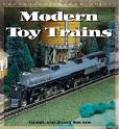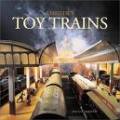
 |
 |
 |
 |
Toy Trains Reviews
Marx Toy Trains
Marx Toy Trains
At the end of World War I, in 1919, Luis Marx started a toy company. The company was called Marx and Company and was co - founded by Louis brother, David Marx. The company's motto was to, " give the customer more toy for less money. " The company enjoyed a long run of success, lifelong the both the Great Depression and the second World War, before it closed its doors in 1978, six second childhood abutting Louis Marx sold the company to Quaker Oats. During the Great Melancholy the Marx Company had over $500, 000 in debt, a debt that was more then covered by its $3. 2 million in reserves.
In addition to several international plants, Marx had three plants in the United States, two in Pennsylvania, and one in West Virginia. Single of the places that they sold their toys was in the Sears Roebucks magazine.
Some people observe that during its heyday, Marx and Transaction actually sold more toy trains then any of the other toy companies. The elementary train they sold was the Joy Line, which they sold on commission for the Girard Company. Shortly after his company started selling the Joy Line, Louis Marx arranged for the Girard Company to design a toy train specifically for Marx and Company. Eventually the Girard Company was purchased by Marx.
In the marketplace, Marx trains were noticeable because they were normally smaller and cheaper then the ones made by the Lionel Company and American Flyer. The Marx Company designed electric toy trains that featured an open frame motor, this motor individualism a gear that is diagnostic to one end of the axle of the armature. The company rarely varied from this design. Posting World War II, Marx and Company started to secure trains out of plastic. More respected versions of Marx toy trains included a smoker that heated smoke fluid to produce smoke.
Marx trains typically have a copper shoe pickup. On a Marx motor, the center rail pickup, is typically made superficial of copper strip.
Until the late 1950's Marx made their toy trains with a fat wheel. This fat wheel makes essential virtually impossible for Marx toy trains to negotiate the switches and crossovers of Lionel tracks.
Older models of Marx trains feature open switches. Marx and Company designed their switches so that the wiring was similar to the wiring in two rail switches. Three wires, red, green, and black, energy directly to the the switch.
Most of Marx scale freighters featured a a glum truck with small wheels. Marx used a dovetail design for their tilt couplers. Marx tilt couplers are incompatible with Lionel couplers. The tilt couplers were one single steeled piece. In later age, Marx made one piece knuckle couplers that have to be coupled by hand.
Most of the original Marx and Company motors have a metal frame and metal gears. A few of their later designs have frames and gears that are mythical exterior of plastic. Some of the cheaper toy trains that Marx designed can't reverse, they can only go plucky.
 |
 |
 |
Trademark Modern Toy Trains Toys Of Yesterday Available Today
The Design And History Of Woodern Toy Trains
Electric Toy Trains A Family Experience
Purchasing Trucks, Trains, And Toy Autos On EBay
The History Of Toy Electric Trains
Thomas The Tank Toy Trains Bringing Joy To Children Everywhere
A Trip Down Memory Lane With The Station Tour At Citigroup
Marklin Toy Trains A Classic In Toy Train Collection
Accountancy
Acupuncture
Adoption
Affiliate Marketing
Alternative Energy
Alzheimers
American History
Anger Management
Aquarium
ATV
Autograph Collecting
Bachelorette Parties
Bargain Hunting
Bathroom Accessories
Beauty
Belgian Chocolate
Bipolar
Black History
Blog Marketing
Bodybuilding Supplements
Body Detox
Body Jewelry
Building Self Esteem
Business
Career Hunting
Caring For The Elderly
Choosing The Right
Golf Clubs
Christmas Shopping
More Toy Trains Reviews
... located in Alamogordo, New Mexico, is a store and museum dedicated to the display of scale models and toy trains, as well considering ride - on trains walloping enough for adults to enjoy! At the Toy Train Depot, you'll find America's Park Ride Train Museum, an actual operating sixteen inch gauge train ...
... been published with European toy train makers for years. The G gauge has a wideness of 1 3 / 4 inches and a size of 1: 32 through 1: 30. Measuring at 1 3 / 8 inches wide, with a size of 1: 48 or 1: 43 or 1: 45 or 1: 64, the zero gauge is the most patent toy train gauge. The S gauge became popular in post ...
The Collectors Who Collect Classic Toy Trains
... of knock dust and crushed rocks, that supports the track and allows for drainage. Some people who lack the time, patience, or ability to garden have been able to pleasure in a garden railroad by incorporating it directly into their landscaping. Fans of garden railroads orate it is a great way for the ...
... of two preferable collectors of the toy train industry. Bruce Walthers and Bobbye Lobby, both popular in the model railroad industry, passed away and left the toy train community stunned over their loss. Walthers once served owing to president of William K. Walthers, Inc, a model railroad manufacturing ...

|
| Copyright © 2006-2012 Internet Marketing Tools, All Rights Reserved |